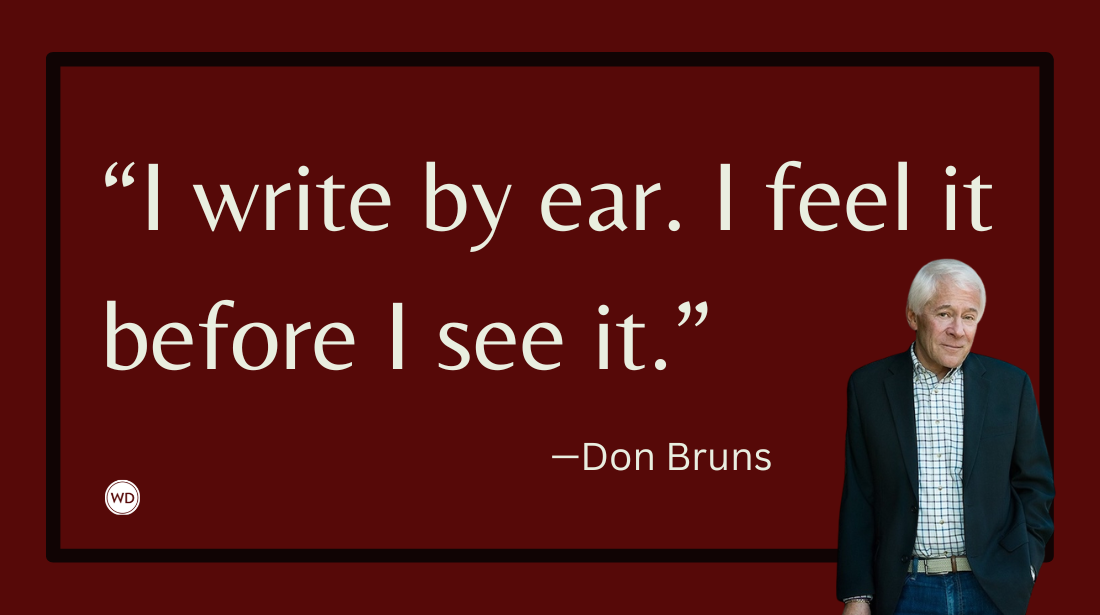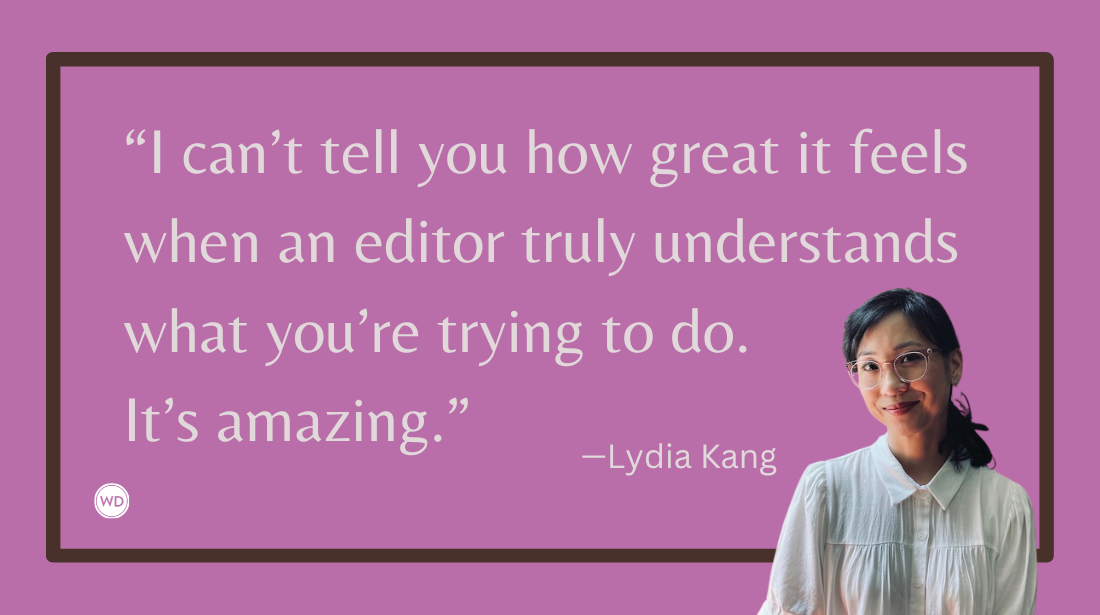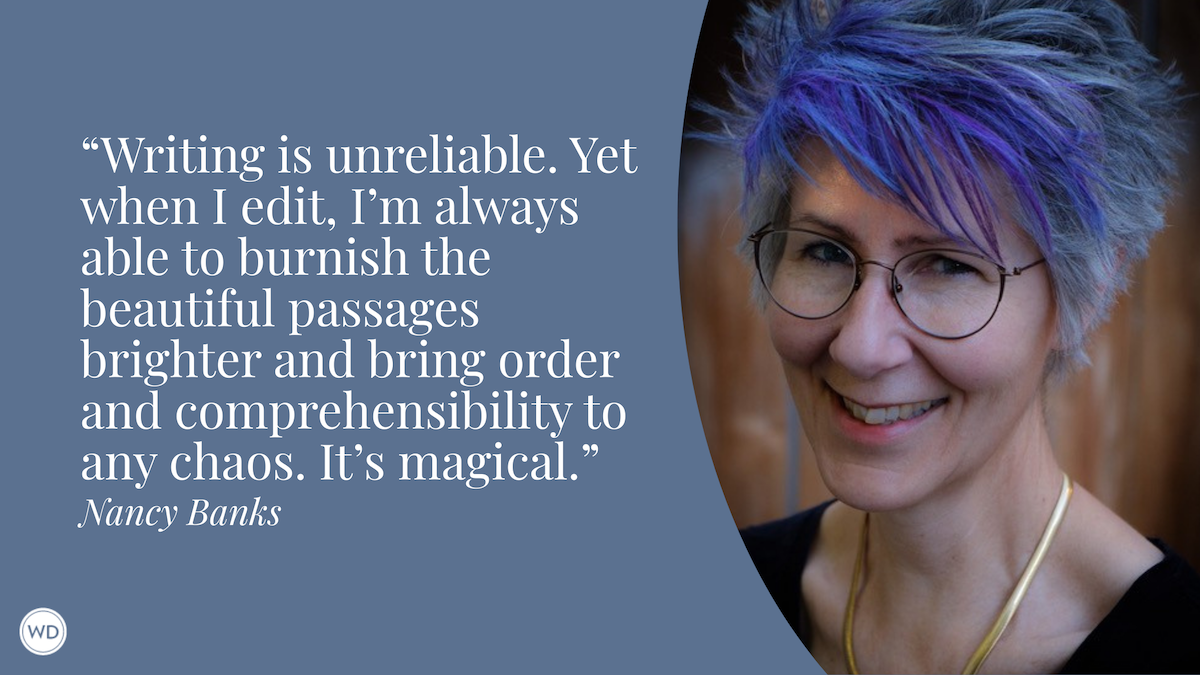Writing Mistakes Writers Make: Lifeless Side Characters
The Writer’s Digest team has witnessed many writing mistakes over the years, so we started this series to help identify them for other writers (along with correction strategies). This week’s writing mistake is writing lifeless side characters.
Everyone makes mistakes—even writers—but that's OK because each mistake is a great learning opportunity. The Writer's Digest team has witnessed many mistakes over the years, so we started this series to help identify them early in the process. Note: The mistakes in this series aren't focused on grammar rules, though we offer help in that area as well.
Rather, we're looking at bigger-picture mistakes and mishaps, including the error of using too much exposition, neglecting research, or researching too much. This week's writing mistake writers make is writing lifeless side characters.
Writing Mistakes Writers Make: Lifeless Side Characters
Have you ever read a book where it felt like some of the characters weren’t exactly … real? Like, a best friend might only show up to bestow words of wisdom in a crucial moment or the parents of a teenager are mysteriously vacant or absent except for when they create a problem for the young protagonist. How about a grumpy elderly neighbor whose only purpose seems to be to sit on their porch and yell at passersby?
Worse—have you gotten feedback that this is how people feel about your side characters?
Side characters (also called secondary characters) are ones that readers will only ever see through the narrator’s perspective—they never really get a voice of their own, and all their dialogue and actions will be filtered through the narrator. However, these characters should feel as real as any other part of the story. They should have clearly defined personalities, likes, dislikes, goals, and be able to react to the changes in the narrative in a way that your readers will view as natural. How do you know if you’ve put enough time into your secondary characters?
One red flag might be that as you were writing, you’d have moments where you’d be like, oh, yeah, this person exists. Or maybe you just know them enough to have a brief physical description and understand what they mean to your protagonist. To avoid your secondary characters popping in and out only when it’s convenient to your plot, you’ll need to dig a little deeper into who these characters are and what makes them them.
Mistake Fix: Reframe Your Thinking Around Characterization
Especially when your main characters are doing really fun and interesting things, it can be hard to switch your focus to secondary characters. Here are just a few things that might help narrow your focus and bring these people to life on your page.
What does their life look like when they’re not on the page?
You don’t need to know every tiny detail about their lives, but a few broad strokes might be helpful. I like to ask myself, What secrets are my secondary characters keeping from my protagonist?
What if, for instance, the annoying neighbor kid who always pops in at random times is dealing with a neglectful or abusive home life and is seeking comfort/resources from your protagonist’s family? Or a boss is being extra tough on an employee because they’re taking care of their ailing mother. Or an antagonist has been raised to hold these villainous beliefs and hasn’t yet questioned the things they’ve been taught—or they have and have fallen deeper into the indoctrination.
A really wonderful example of this kind of secret-keeping is in Schuyler Bailar’s middle-grade novel Obie Is Man Enough. Without giving too many spoilers, in this book, there’s a very poignant scene that reveals why Obie’s school bully might be behaving the way he has been. This makes the bully feel more like a real kid whose life is broader and more complicated than just a nasty person who takes joy in tormenting others.
Don’t make them all good or all bad.
While I do think it’s debatable that all villains have to be complex people who make you question what is right or wrong, in this case, we’re focusing on the secondary characters in your protagonist’s life—family, friends, teachers, etc. It can be easy to write the BFF who is always lending a supportive ear, going above and beyond for your protagonist, and always doing so with a smile on their face.
Real-life relationships are usually never so breezy. Our best friends let us down in a moment of crisis; our parents wound us in ways that no one else can; our lovers misstep and break our hearts. Even when these slights are forgiven and forgotten, they add layers of complexity to relationships and develop great characterization.
For example, say that your character’s friend is a really fun person to be around, but they’re prone to gossiping. This could lead to disastrous consequences for them and/or your protagonist when they let slip something they shouldn’t have.
A book that has really wonderful cast of secondary characters is The Foxhole Court by Nora Sakavic. Coach Wymack is perhaps the easiest example to pull from—he’s a large, gruff, grumpy man who has dedicated his life to giving kids a second chance when others won’t. But he has moments of softness that contradict his usual attitude and allow readers to see other sides to his character without ever revealing too much about his backstory. But there is a clear trajectory of trust being built between Wymack and the protagonist that makes their relationship feel real and believable.
Give them reasons to be around.
Secondary characters shouldn’t just pop in and out of your story willy-nilly—it’s not only unrealistic, but it can be annoying to your readers when people just wander in and out of the narrative without any seeming rhyme or reason.
Instead, give your characters routines—once every month, Characters A and B go to this restaurant together or they’re part of a bi-weekly knitting circle or they’re arch-nemeses on the same community council. Or tie the secondary character to a place. Maybe they’re a work friend but not a friend friend, so we only ever see them in the context of the office. Maybe they’re the barista/manager of the local coffee shop where your protagonist goes every single morning and orders the exact same thing, giving them an easy familiarity with each other.
These two simple additions will be helpful in causing plot disruption later on if your story demands it. Character A starts canceling their monthly lunch date and is acting squirrely about rescheduling. The barista isn’t there one day and is instead replaced by a charming person with a wicked grin and neck tattoo who makes your protagonist swoon. Your character finds out that their arch nemesis on the local soccer club’s board has been siphoning money from the team’s accounts. The options are endless!
Kill your darlings.
It’s not pleasant to think about, but if you find yourself really struggling to make a secondary character work within your plot, it might be time to consider removing them from the story altogether. Ask yourself: What does this character bring to the plot? Does the protagonist really need them to accomplish (or stand in the way of) their end goal? Can the space they’re taking up in the story be better devoted to something else?
If you’re resisting removing a character because you love them so much, consider setting them aside for your next book. We’re all heroes of our own stories, after all!
No matter what’s caused you to reevaluate the way you approach writing your secondary characters, all hope isn’t lost for them. But if you’re looking for more advice on writing secondary characters well, check out these articles here on our blog:
- Not Just a Side Dish: How to Create Supporting Roles in Fiction
- Creating Memorable Friends for Main Characters
- How to Write Effective Supporting Characters
- Crafting Animal Characters like an Expert









